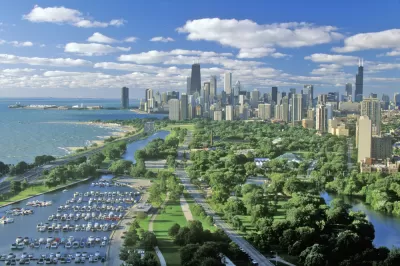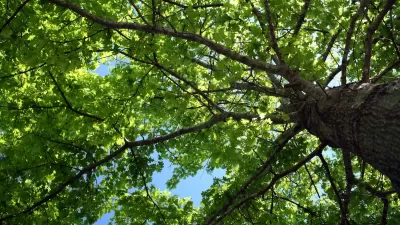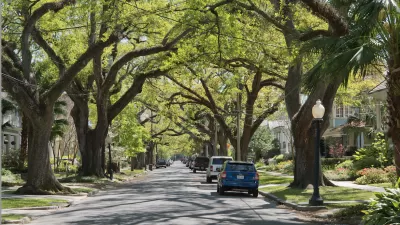Advocates for urban greening are asking the city to boost its tree planting efforts and protect existing trees, which are a key tool for fighting the effects of climate change and worsening heat waves.

In a commentary piece in the Chicago Tribune, Daniella Pereira, vice president of community conservation at Openlands, and Naomi Davis, founder and CEO of Blacks in Green, call on Chicago’s leaders to make a stronger commitment to protecting the city’s tree canopy through comprehensive efforts to preserve existing trees when possible and ensure equitable distribution of resources across the city’s neighborhoods.
It is a disgrace that while $46 million worth of street trees will be planted, our existing healthy and large canopy trees continue to be removed through aldermanic privilege and a Department of Water Management that follows practices contrary to the mayor’s edict. Chicago already has a low tree canopy, and with the removal to planting ratio being 2 to 1, 75,000 trees will not even replace the canopy of what continues to be removed.
Even with tree planting efforts, the authors point out that “Without saving the existing canopy, it will be decades for these young trees to offer the same environmental and health benefits to communities that need them the most now.” The authors claim that “Chicago’s Department of Water Management continues to remove all trees in their way. These trees, the one appreciating asset we have in the city, are then not replaced. In all other cases, when trees are requested to be removed, a forester inspects the tree and, if healthy, denies the request.”
According to Pereira and Davis, “The city needs to have a driver of a strategic urban forestry management plan and a tree canopy goal strategy as a minimum, for each community area.” Furthermore, “That strong vision should be followed by strong tree protection ordinances, policies, interdepartmental communication and public engagement.”
FULL STORY: To fight climate change, Chicago should maintain, strengthen its tree canopy

Alabama: Trump Terminates Settlements for Black Communities Harmed By Raw Sewage
Trump deemed the landmark civil rights agreement “illegal DEI and environmental justice policy.”

Planetizen Federal Action Tracker
A weekly monitor of how Trump’s orders and actions are impacting planners and planning in America.

The 120 Year Old Tiny Home Villages That Sheltered San Francisco’s Earthquake Refugees
More than a century ago, San Francisco mobilized to house thousands of residents displaced by the 1906 earthquake. Could their strategy offer a model for the present?

In Both Crashes and Crime, Public Transportation is Far Safer than Driving
Contrary to popular assumptions, public transportation has far lower crash and crime rates than automobile travel. For safer communities, improve and encourage transit travel.

Report: Zoning Reforms Should Complement Nashville’s Ambitious Transit Plan
Without reform, restrictive zoning codes will limit the impact of the city’s planned transit expansion and could exclude some of the residents who depend on transit the most.

Judge Orders Release of Frozen IRA, IIJA Funding
The decision is a victory for environmental groups who charged that freezing funds for critical infrastructure and disaster response programs caused “real and irreparable harm” to communities.
Urban Design for Planners 1: Software Tools
This six-course series explores essential urban design concepts using open source software and equips planners with the tools they need to participate fully in the urban design process.
Planning for Universal Design
Learn the tools for implementing Universal Design in planning regulations.
Clanton & Associates, Inc.
Jessamine County Fiscal Court
Institute for Housing and Urban Development Studies (IHS)
City of Grandview
Harvard GSD Executive Education
Toledo-Lucas County Plan Commissions
Salt Lake City
NYU Wagner Graduate School of Public Service





























